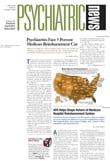Raising taxes on beer, rating movies and TV shows based on their depiction of drinking alcohol, and enacting new measures to deter adults from buying alcohol for minors are ways the nation can reduce the problems associated with underage drinking, according to a report issued in September by the National Research Council and the Institute of Medicine of the National Academy of Sciences.
The report, titled “Reducing Underage Drinking: A Collective Responsibility,” places the societal costs of underage drinking—driving-related injuries and death, violent crime, sexual assault, unwanted pregnancies, and suicide, for example—at $53 billion a year in the United States.
By age 20, according to the report, 70 percent of those who consume alcohol engage in heavy drinking, which is defined as five or more drinks in a row during a two-week period.
The report found that alcohol was a factor in almost 37 percent of fatal youth traffic accidents in 2000. Another study found that nearly 40 percent of people under age 21 who were victims of drowning, burns, and falls tested positive for alcohol consumption. And there are even more startling statistics associated with alcohol. In people under age 21, alcohol has been reported to play a role in 36 percent of homicides, 12 percent of male suicides, and 8 percent of female suicides.
Several government and privately funded programs have been created to address the serious problems of drinking among youth. In 2002 Congress allocated $500,000 to the National Academy of Sciences and Institute of Medicine to review federal and state alcohol prevention programs and to establish a comprehensive campaign housed in the Department of Health and Human Services.
“If we do no more than pepper kids with antidrinking messages, things are not likely to get any better,” attorney Richard Bonnie, chair of the academy’s Committee on Developing a Strategy to Reduce and Prevent Underage Drinking, wrote in the introduction to the report.
“We have to resolve, as a national community, to reduce underage drinking and the problems associated with it and to take comprehensive measures to achieve this goal,” said Bonnie, a consultant to APA’s Council on Psychiatry and Law.
The committee challenged the alcohol industry, entertainment industry, and state governments to enact widespread reforms in the promotion, sale, and regulation of alcohol as a way to reduce its appeal and availability to minors.
Private-Public Partnerships Urged
For instance, the report called for the alcohol industry to join with private and public entities to establish and fund an independent nonprofit foundation with the sole mission of preventing and reducing underage drinking. It also discouraged the alcohol industry from advertising during television programs that typically draw younger viewers.
Committee members also endorsed the need for rating systems on movies, television shows, and compact discs that would warn consumers about “unsuitable alcohol content,” defined as “lyrics, images, depictions, or messages that portray underage drinking in a favorable light” or that glorify excessive alcohol intake by anyone.
States also must take an active stance in reducing underage drinking, according to the report, by cracking down on retailers who sell alcohol to minors, requiring individuals who serve alcohol to complete state-sponsored training as a condition of employment, and raising taxes on beer to discourage underage consumption.
The report also called for a youth-focused national media campaign, evidence-based educational interventions for youth, and continuing evaluations of drinking prevention programs on the nation’s college campuses.
Health Risks in Spotlight
The AMA is involved in two programs to fight the epidemic of underage alcohol consumption. For many high school and college students, drinking to excess is the norm, and the practice is often glamorized by popular culture. In efforts to challenge the societal norms that enable dangerous drinking behavior, the AMA has joined forces with the Robert Wood Johnson (RWJ) Foundation to launch two new programs.
In the first, titled “Reducing Underage Drinking Through Coalitions: Youth and Adults United for Change,” 12 coalitions are working to identify factors in youth environments that contribute most to underage drinking and to diminish those factors.
Television ads, alcohol-pricing procedures, and alcohol-distribution practices are viewed as problem areas and will be discussed by coalition members.
The coalitions are a geographically diverse lot, including Pennsylvanians Against Underage Drinking, the Puerto Rico Coalition to Reduce Underage Drinking, and the Georgia Alcohol Policy Partnership.
The RWJ Foundation is funding the $10.2 million initiative.
High-risk drinking among college students is the focus of the other AMA program, “A Matter of Degree: The National Effort to Reduce High-Risk Drinking Among College Students.”
According to statistics from the National Institute on Alcohol Abuse and Alcoholism, drinking by college students contributes to an estimated 1,400 deaths, 500,000 injuries, and 70,000 cases of date rape each year in the United States.
To reduce the serious problems associated with excessive alcohol use, the AMA and the RWJ Foundation have launched an $8.6 million, seven-year program to foster collaboration between 10 universities and the communities surrounding them. Administrators and students at Florida State University, for example, will be working with Tallahassee city officials in one of the collaborations.
Information on the Institute of Medicine’s report, “Reducing Underage Drinking: A Collective Responsibility,” is posted on the Web at www.iom.edu/report.asp?id=15100. Information about “Reducing Underage Drinking Through Coalitions: Youth and Adults United for Change” and “A Matter of Degree: The National Effort to Reduce High-Risk Drinking Among College Students” is posted on the Web at www.ama-assn.org/ama/pub/category/3337.html. ▪
